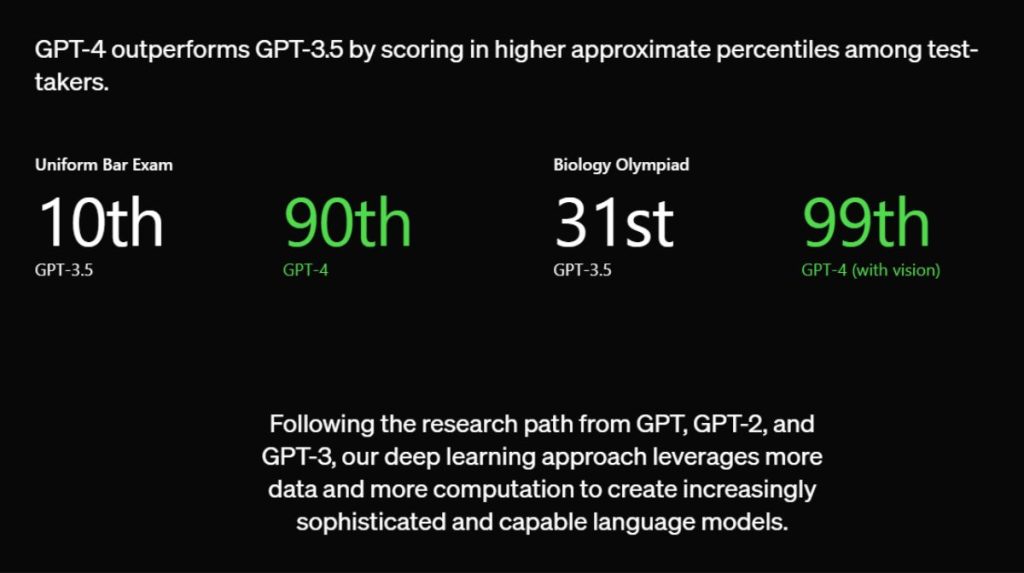Artificial intelligence has transformed the workplace. Many routine tasks are faster and easier, and a lot of the information we need is now served on a silver platter.
Just think of a busy marketing team that had to juggle multiple campaigns and keep up with so many looming deadlines.
Various AI tools can step in to do a lot of the work, from generating marketing copy to proofreading and even scheduling social media posts on the fly.
The team is free to focus on strategy and think outside the box.
And this is just one way AI can streamline business operations. That said, AI isn’t perfect.
Nearly half of all organizations report severe data quality challenges that jeopardize AI initiatives.
So, while AI can be incredibly useful, it’s crucial to use it responsibly.
This article will help you understand the most effective AI fact-checking techniques to maximize AI’s benefits while ensuring your content stays accurate and reliable.
Let’s jump right in.
Key Takeaways
- AI speeds up content creation but still risks errors, hallucinations, and misinformation.
- Fact checking AI content requires evaluating sources, verifying claims, and cross-referencing data.
- Tools like FactCheck.org, Snopes, and Undetectable AI help confirm both factual accuracy and authenticity.
- Combining AI verification with human oversight ensures reliable, high-quality, and trustworthy content.
How to Fact Check AI Content
As exciting as using AI is, the catch is that it can’t always be trusted to provide accurate information.
That’s why learning how to fact check AI content is crucial. One major reason AI isn’t reliable is because of AI hallucination.
This happens when it generates information that seems true but is entirely made up.


Never Worry About AI Detecting Your Texts Again. Undetectable AI Can Help You:
- Make your AI assisted writing appear human-like.
- Bypass all major AI detection tools with just one click.
- Use AI safely and confidently in school and work.
You read that right—AI can make stuff up because it prioritizes fulfilling your prompts.
There’s also the risk of AI plagiarism. When AI tools generate content, they might unintentionally produce text that closely matches existing material.
This is a serious concern, especially with AI models like ChatGPT.
Although its latest version, GPT-4, claims to be 40% more likely to produce accurate results than its older version, ChatGPT is still not perfect.

Without proper AI for fact checking, you might publish wrong data, and this could damage your credibility.
Check your accuracy and maintain trust with your readers with these AI fact checking strategies.
Source Evaluation
Probably the most common way how to fact check AI content is by evaluating all the sources.
Source evaluation sorts out misinformation and confirms the credibility of those used.
There are different ways to do this, but one effective method is the CRAAP test.
This assesses the Currency, Relevance, Authority, Accuracy, and Purpose of a source in any content you make.
- Currency: Check the timeliness of the information. Ask yourself when the source was published or last updated.
- Relevance: Assess how necessary the information is to your needs. Does it still relate to your topic?
- Authority: Determine the source’s credibility. Who is the author or publisher, and are they reputable on the subject?
- Accuracy: Verify the reliability, truthfulness, and correctness of the content. Does the source provide some strong evidence to support its claims?
- Purpose: Understand the reason behind the information. Is it meant to inform, teach, sell, entertain, or persuade?
Another method is lateral reading. This is done by cross-checking your sources with official statistics and other reliable references.
So, instead of blindly accepting these figures, compare them with data from other trustworthy sources like census reports.
These are just a few, but source evaluation, in general, can let you know whether a source accurately represents data or presents information in a misleading way.
Claim Detection

Claim detection involves identifying and verifying statements within the content that require fact checking.
Generative AI, while more than capable of recognizing linguistic patterns, can’t determine the truthfulness of the content it generates.
Claim detection is the process that identifies and verifies statements within the content that require fact checking.
A claim can be anything—a statistic, quote, or anecdote—that needs to be verified.
For instance, Propositional Claim Detection (PCD) is a Natural Language Processing (NLP) task that aims to identify sentences that can be true or false.
With it, content is highlighted by the AI tool with a PCD feature that might need fact checking, making it easier to identify, verify, and edit potentially problematic claims.
This is especially important given how much misinformation spreads nowadays.
Contextual Analysis
Context is the map that guides us through the complex stuff in our content.
Without context, key information is misunderstood or misinterpreted, leading to confusion and mistakes.
When you consider the context when fact checking AI, you can get a clear grasp of the true meaning and intentions behind the information, making analysis more accurate.
Contextual analysis examines the content within its historical and cultural setting to understand it better.
This helps you make sense of the text by situating it within its broader context, which includes considering the roles of the author, the intended audience, as well as the commentators.
With this, you’ll be able to see how different elements fit together, identify potential areas of concern, and gain multiple perspectives.
It’ll be much easier, too, to cross-reference it with other verified sources and find out if there’s anything wrong.
Verification Tools
Fact checking means verifying your sources, and the right tools make it simple.
Verification tools assess information’s accuracy by cross-referencing it against tons of reliable sources.
They streamline the fact checking process, making sure all claims are backed up with credible evidence.
Manual fact-checking is time-consuming, but the right prompt can automate the process of cross-referencing and claim detection across multiple sources.

Our Undetectable AI’s Prompt Generator is designed to help you instantly generate high-performing instructions that streamline the verification of facts, dates, and statistics in your AI-assisted writing.
Some well-known verification tools include FactCheck.org, Snopes, and PolitiFact, which allow users to check the facts on a wide range of topics.
But that said, it’s equally important to verify your content for AI detection.
A piece of content can instantly lose credibility if it’s generated by AI. Reliable detectors like Undetectable AI can analyze your content whenever you need it.

It checks if your content contains any noticeable AI elements, helping you maintain high standards of authenticity.
These verification tools can definitely maintain the integrity of your content while still responsibly harnessing the power of AI.
This dual approach of fact checking and verifying for authenticity really boosts the quality of your work.
Feedback Mechanism
A feedback mechanism is a systematic approach that provides insights into the performance of your content and can guide future actions.
This process automates feedback by making it less personal and more objective.
It avoids feedback overload, which can occur when people get too much or overly conflicting feedback.
So, instead of reflecting on your past behavior, these mechanisms are focused on guiding you toward better future outcomes.
For example, a content creator might receive automated feedback on the clarity and engagement of their writing.
This prompts them to adjust their style to enhance reader interest.
This forward-focused approach maintains a continuous cycle of improvement so that your content stays relevant.
Human Oversight
Despite how advanced AI technology has become, there’s still no better way to check something’s credibility than with your own eyes.
AI is great at generating content, sure. But it lacks the nuance and judgment that only human editors can provide. Humans and AI should go hand in hand.
Incorporating human input into the content creation process is essential to catching errors, biases, and inaccuracies that AI can’t.
Human editors also bring creativity into the scene.
Thanks to years of experience, their involvement ensures your content isn’t just factually correct but also engaging and ethically made.
Give our AI Detector and Humanizer a spin in the widget below!
FAQ’s
How does AI help in fact checking?
AI helps with fact checking by quickly scanning and analyzing huge amounts of data. It uses NLP to understand and interpret the content and then cross-references it with various trusted sources to confirm its accuracy.
AI can highlight any potential inaccuracies and provide suggestions for corrections. AI fact checking tools make the whole process much more efficient and thorough.
What are the benefits of using AI for fact checking?
Using AI for fact checking offers several benefits, including increased efficiency, accuracy, and scalability.
AI can process and analyze information much faster than we humans could. It also reduces the manual effort required for fact checking. This ultimately saves you valuable time and resources.
How can I verify information using AI?
To check any information generated by AI, you can utilize specialized fact checking tools designed to assess the accuracy of content.
These tools compare the information against a database of verified sources and known facts. You simply input a statement or claim into a fact checking AI tool, and it checks it for accuracy.
Conclusion
Using AI to make content will enhance your efficiency and creativity, giving you that competitive edge and letting you produce high-quality content more consistently.
But here’s a rule to live by:
If you’re using AI, you should also know how to fact check AI content.
Remember that AI isn’t perfect. But combined with a keen human eye, it makes fact checking faster and easier—without sacrificing accuracy.
As you fact check your AI-generated content, make sure it also passes AI detection with Undetectable AI.
Keep your content authentic and high-quality. Undetectable also offers Humanize AI, a tool that makes generated text sound as natural as possible, polishing your content to appear authentically human.
It doesn’t just let you pass AI detection with ease but also guarantees the quality of your content.
Bring together the best of both worlds. Add AI to your fact checking process, and combine it with AI detection to ensure your content remains accurate.
To ensure your content is always at the highest standard of quality and authenticity, try the Undetectable AI today.
